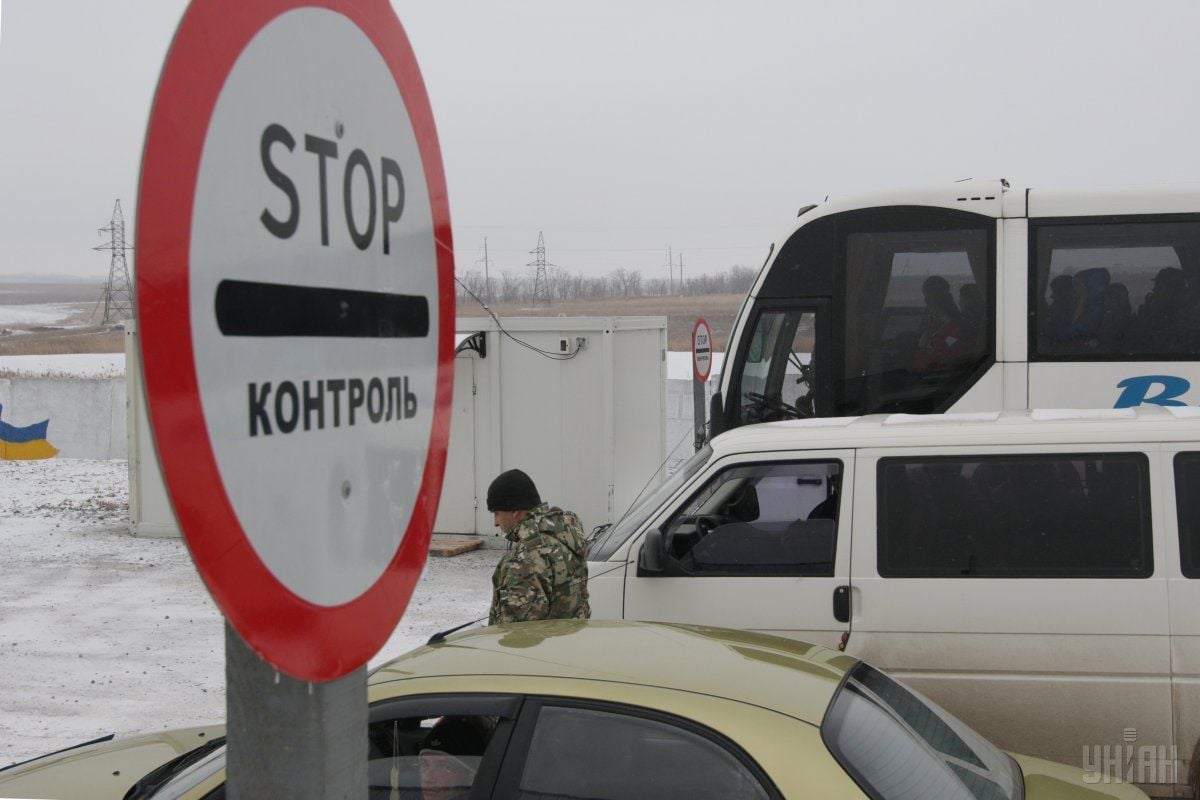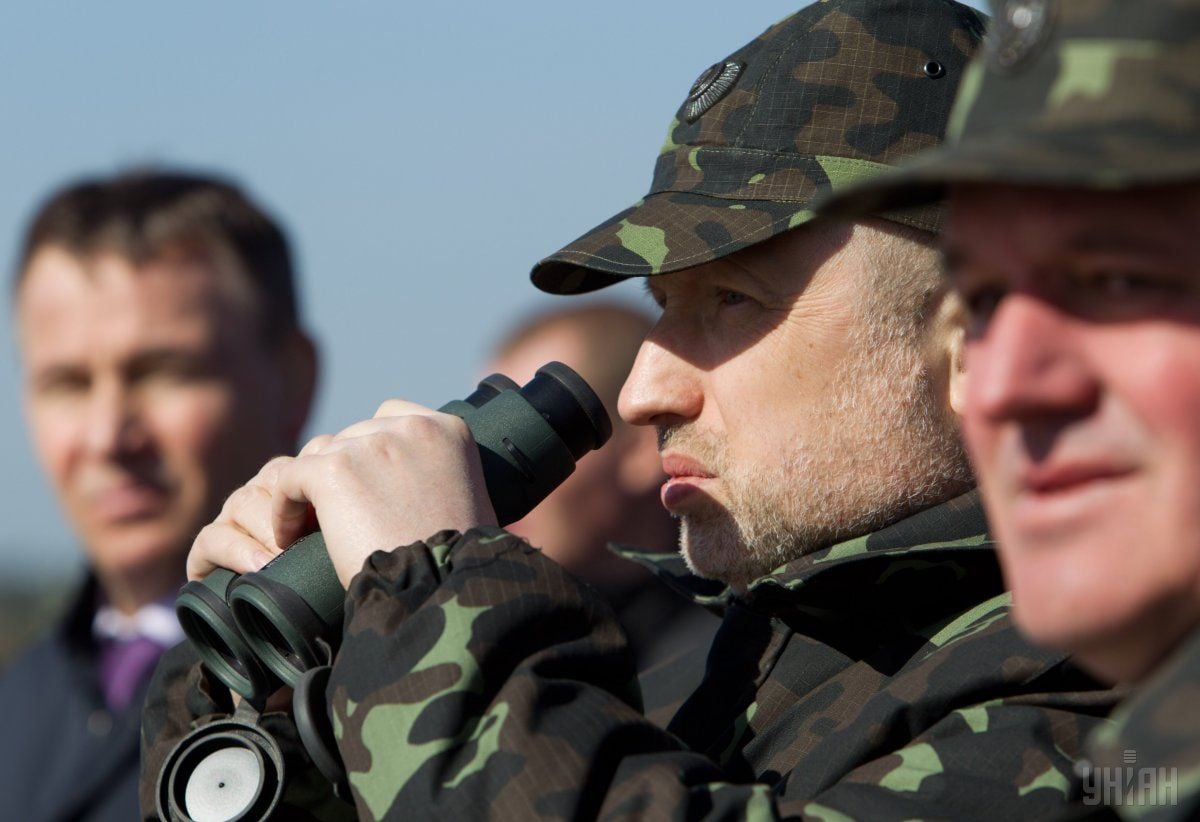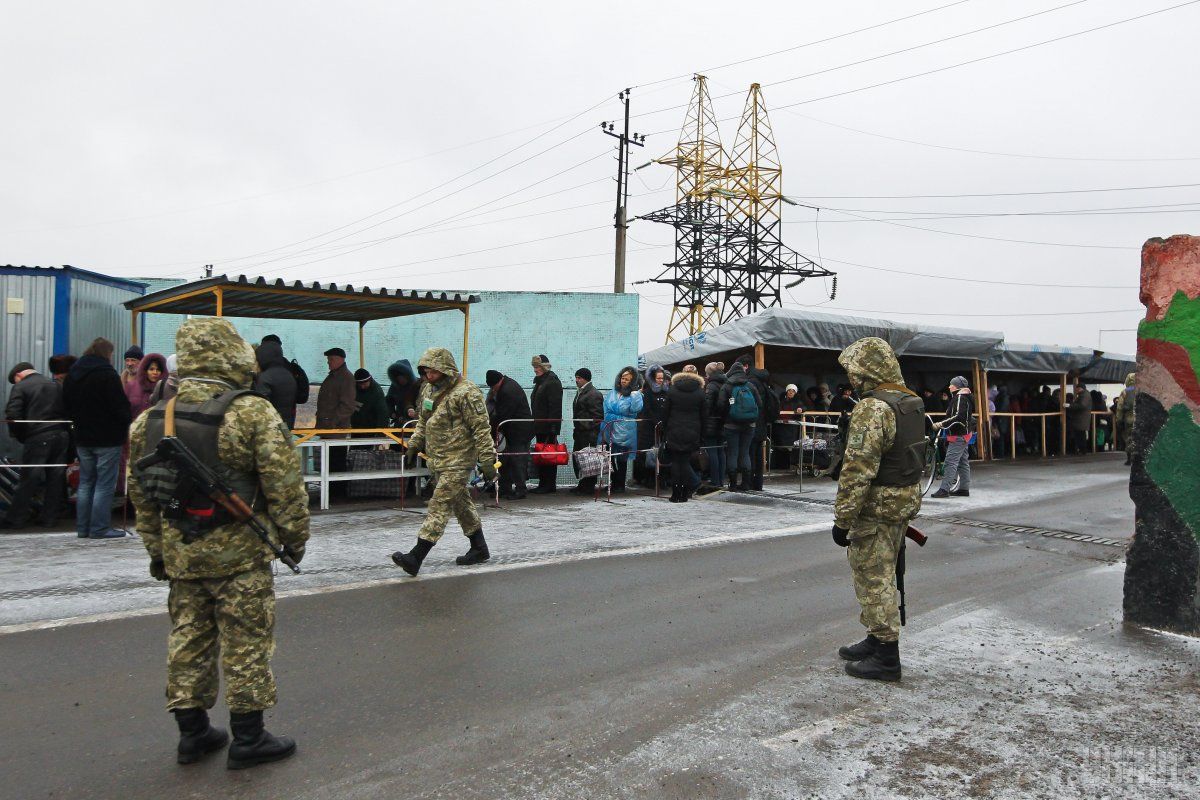
Forced border
In January 2015, a permit system was introduced for crossing the demarcation line between government-controlled territory and occupied areas of the Ukrainian Donbas. UNIAN reports on the changes at this “border” within the country that have developed over the past two years.
First checkpoints in Donbas had begun to appear in the midst of fighting back in 2014. In this way, the Ukrainian army strengthened the borders of local towns from the militants. In turn, the latter were guided by similar objectives.
Back in the days, all checkpoints looked about the same: reinforced concrete blocks, placed on the road in a checkerboard pattern, tents, and a lone flag flying over it. The number of troops and the amount of equipment varied depending on the strategic importance of a particular stretch of the road.
The inspection of vehicles and passengers crossing the checkpoints were conducted on both sides. They were held in a similar "scenario": passengers would get off the bus, line up and wait for the troops or the militants to check their bags and IDs. Actually, in 2014, citizens required nothing but a passport for a free "border" crossing. In 2015, the situation changed.
January 21, 2015, the permit system was introduced. That is, to cross the demarcation line, a special pass was required. But problems emerged immediately both with obtaining these passes and using them.
In theory, everything seemed simple: those willing to obtain a treasured paper had to submit an application form and a whole list of other documents confirming the identity and the purpose of “border” crossing, to one of police departments in Mariupol, Debaltseve, Starobelske or Velyka Novoselka, wait a maximum 10 days to pick up the paper and travel from the Ukrainian government-controlled territory to the ATO zone. If someone wanted to enter Ukraine from the occupied areas, they had to undergo the same procedure by submitting an application to the extreme outpost of the Ukrainian military.
In practice, everything went not as planned initially. The first inconvenience for citizens lay in the fact that collecting the whole set of papers required was virtually impossible as the internally displaced persons left some of the documents behind. Secondly, even a successful filing of an application did not guarantee that the permit would be granted shortly: the wait could last weeks or even a month.
Easy money on demarcation line
Of course, given total confusion and bureaucracy, corruption bloomed in permit issuance. For example, some people in the territories beyond government control could have their papers ready within a few days, for a certain fee. According to a Donetsk woman who identified herself as Valentyna, she failed to obtain a permit in a legal procedure, therefore she was forced to purchase it in Donetsk for UAH 1,500. The woman is convinced that such "business" was arranged upon agreement of both sides. "The pass was real, and it was given to me here [in the occupied Donetsk]. What does it mean? It means, they’ve agreed with each other, to rip off people off," she suggests.
Due to corruption, paper passes were eliminated and in July 2015 the electronic system for issuing permits was introduced.

"The new exit-entry system in the ATO zone is designed to reduce the time and improve quality of checks, as well as to overcome corruption in the issuance of permits," NSDC Secretary Oleksandr Turchynov said.
With the introduction of the e-system, everything got simplified indeed and there was no need to pay bribes to officials anymore as it was no longer necessary for the applicants to contact them.
To date, getting a pass is very simple: after filling out the application in a relevant Register on the website of the SBU Security Service of Ukraine, citizens receive a notice (by mail or personal account) and can freely cross the checkpoints having only a passport of a citizen of Ukraine on them.
At the same time, certain people, mostly pensioners, fall victim to fraudsters who say they can speed up the process of getting permits online, although any applicant could personally fill in all forms, that’s according to the head of Foundation 101 NGO and human rights activist Andriy Bohdanovych.
Another easy way to earn money on the demarcation line is the so-called sale of places in the queue. "Those who want to make money, come to checkpoints early in the morning, just sell their place in line another person," says Bohdanovych.
The fact that there is demand for such services is not surprising at all. Long lines are the sad realities at checkpoints. The flow of people is higher than the capacity of entry and exit crossing points (EECP) (7,000-8,000 people per day). For example, according to deputy head of the Office for the Coordination of Humanitarian Affairs (OCHA) Nadir Minbashiyev, up to 25,000-20,000 people can cross through an EECP per day. Often, people are forced to spend a night in the "gray zone", because, for example, leaving the militant-controlled areas, they simply do not have enough time to cross to the gov’t-controlled territory before the night curfew.
Besides, long queues and a long process of ID verification on the demarcation line creates additional possibilities of corruption.
The only ones who seem to not perceive the permit system as an obstacle are smugglers. According to local residents, contraband goods are smuggled mostly beyond checkpoints. Moreover, citizens who stand in line for many hours, in their own words, can’t drive on these "paths". "These areas are dangerous and they are controlled by the military, who, in theory, should not let anyone pass," they complain.
Queue more frightening than shooting
The permit system in Donbas continues to operate today. However, checkpoints significantly changed over the past two years. To date, five EECPs operate along the demarcation line: Maryinka, Maiorske, Hnutove, Novotroitske, and Stanytsia Luhanska. According to witnesses, all of them, in fact, are like real border checkpoints.
"The existing EECPs are equipped well enough. By the looks and types of checks, they are much alike those on the border with, say, Poland. The only thing different is that it’s border guards and fiscal authorities who perform checks, while on the real border it’s customs officers instead of fiscal authorities," says Andriy Bohdanovych.
As for services and comfort he said, that compared with 2015, they have improved significantly: rain covers were laid, the number of toilets was increased, and signs were installed warning of mines at roadsides.
The frightening truth is that the mines along the roads, just as the shellings of checkpoints, no longer cause any real stress among the EECP’s frequent visitors. A poll by Foundation 101 held in November 2016 indicated that the greatest concern to the people were long queues (81%), rather than attacks (55%) or mines near the road (9%).

According to Andriy Bohdanovych, this trend has persisted for the past six months. "People are used to the fact that there are attacks. They are forced to live in such conditions, and there’s nothing they can do about it. But these queues are something they face on a daily basis at the crossing of the demarcation line, which complicates their lives," says the human rights activist.
Three scenarios of optimization
Experts offer a variety of scenarios that can change the current state of affairs and help solve the main problem of EECPs, which is the issue of long queues.
According to Bohdanovych, a significant part of the queues is the people who travel to Gov’t-controlled territories to buy stuff and withdraw money from ATMs, and they return shortly. Therefore the lines could be unloaded due to the full-fledged launch of the so-called logistics centers.
It should be recalled that in the summer of 2015, President of Ukraine Petro Poroshenko instructed the authorities to accelerate the process of setting up in the ATO zone of humanitarian and logistics centers, where mobile banking institutions could also operate and where people would be able to buy groceries and medicines at prices lower than in the occupied territories and return back without crossing the EECP.
The idea is to have these logistics centers be set up in the "gray zone" - between a “zero” roadblock and the EECP. But, unfortunately, the initiative has not been implemented properly. "Very few people visit these centers because there is a small selection of products, while few businesses show up due to a low number of buyers and low demand… It’s a vicious circle..." explained Bohdanovych.
In addition, it was assumed that people traveling to a logistics center will not stand in the common queue at EECP. However, there were cases when people from the general queue would resent such facts, and this even resulted in brawls. Perhaps that is why border guards often put these people in the general queue. “In this case, if people have waited so long, they’d rather buy everything they need in the Gov’t-controlled territory, where there is a better choice of goods and more opportunities to withdraw funds, and so on," says Andriy Bohdanovych.
Deputy Head of the OCHA Nadir Minbashiyev, in turn, believes that the problem of long queues may be solved by simplifying inspection procedures, including the elimination of a double check by border guards and the SBU.
Officials in the military and civil administrations assure that the load on the existing EECPs will decrease with the opening of new ones. However, there are two issues here. Firstly, such an initiative is not supported by the militants, who settled in certain areas of Luhansk region. It should be recalled that Zolote EECP in Luhansk region cannot be opened since March last year.
Secondly, according to Bohdanovych, one should not expect that any extra EECP will really unload the queues. "It just seems logical at first sight that if you increase the number of EECPs, the load on them will be lower. In fact, more people will start crossing, that’s all," he said.
Whatever optimization scenarios for the unloading of checkpoints exist on this improvised “border”, this so-called border should not exist at all. People from both sides of the demarcation line want it to happen. On the other hand, until hostilities cease, such option cannot be considered.
Iryna Shevchenko

